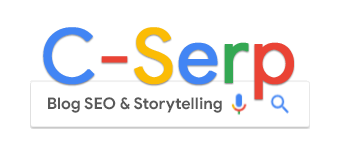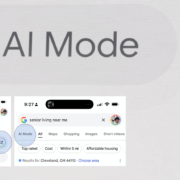Google Ads data shows query length shift post-AI Mode

Google hasn’t done a full cannonball into the large language model (LLM) pool, but they’re definitely in the water.
On May 20, Google launched AI Mode to all U.S. searchers, marking its most significant step yet toward integrating generative AI into the core search experience.
AI Mode is their version of what ChatGPT and Perplexity’s default models have been offering for months.
They see the writing on the wall; search is undergoing its first fundamental shift since Google’s inception.
The entire model for Google, its advertisers, and its users is changing – and it isn’t going back.
So far, Google has provided little insight into how much search volume is flowing through AI Mode, leaving advertisers to figure it out themselves.
This article uses our internal search query dataset to infer user behavior patterns and evaluate how AI Mode may be impacting key advertising metrics.
The data I’m sharing comes from Google Ads search query reports spanning Jan. 1 to June 20.

Query length trends are evolving
Let’s start with impressions. Overall trends remain fairly stable at the long end of the curve (search terms with seven or more words), aside from a brief blip in April.
The biggest shift has been from 1-2 word keywords to 3-4 word search terms.
Short queries dropped from 42% in January to just 31% in June – suggesting users are increasingly communicating in more natural language.
Click data follows the same pattern.


Click-through rates are down across the board
While this data indicates a shift in consumer behavior, it doesn’t necessarily mean that volume has changed.
That’s the current working hypothesis among many search marketing professionals: that given the nature of AI Mode and LLMs to deliver long-form answers, paid search and organic clicks are decreasing, or decoupling from impressions.
To better understand this, I looked at throughput metrics like click-through rate and conversion rates.
These data points paint a very interesting picture.
Across the board, CTRs have decreased fairly sharply. Every single category is down since January.
Shorter keywords have a CTR drop of 50%.
For longer keywords, the decrease is less dramatic, but only slightly.
Keywords with more than eight words are down by 26%.

Conversion patterns are shifting too
The volume of conversions – and the length of keywords driving them – has also shifted.
In this dataset, conversions were largely driven by shorter keywords (1-2 words) but have moved toward slightly longer ones (3-4 words).
Shorter keywords accounted for 76% of conversions in January, but dropped to 50% by June.
Three- and four-word queries now make up 40% of conversions, up from 20% in January.

Why this matters: Interpreting the behavioral shift
The dataset so far this year strongly indicates a significant shift in consumer search behavior since the introduction of Google’s AI Mode.
The drop in impressions and clicks for shorter (1-2 word) queries, alongside a rise in 3-4 word queries, suggests users are increasingly adopting more natural language in their searches.
This shift is reinforced by the across-the-board decline in CTRs and the migration of conversions from shorter to slightly longer keywords.
And this is just the tip of the iceberg.
Google is still rolling out AI Mode as the default to more users, and this behavioral shift will likely accelerate as they grow more comfortable with the new experience.
What advertisers should do next
To adapt to this evolving landscape, advertisers must take a data-driven, forward-looking approach.
Start with your own performance data, then refine your strategy around the growing trend toward natural language queries.
1. Scrutinize your own data
The first and most crucial step is to analyze your own Google Ads search query reports.
While this article highlights broad trends, your account performance may differ.
Look closely at patterns by keyword length across impressions, clicks, CTRs, and conversions.
2. Leverage your data to enable AI use cases
Use tools like Instant BigQuery to build more sophisticated AI-powered workflows and insights.
The more granular your data access, the better your ability to detect shifts and adapt.
3. Embrace longer-tail strategies
The rise of natural language queries calls for a shift in how you approach search.
Build campaigns and content that are designed for longer, more descriptive search terms. That includes:
- Content optimization: Create comprehensive content that answers complex questions and meets specific user needs – these are increasingly discoverable through conversational queries.
- Keyword expansion: Target more long-tail variations, phrases, and questions that reflect how users engage with AI models.
- Ad copy relevance: Tailor your ad messaging to align with more specific, intent-rich queries, offering clear value and improving engagement.
4. Monitor AI Mode’s evolution
AI Mode is still in its early days. Keep a close eye on changes to features, rollout progress, and emerging user patterns.
Stay agile and be ready to pivot as Google continues to refine the experience.
Just the beginning of the shift
AI Mode isn’t a one-time change – it’s the start of a fundamental realignment in how users interact with search.
The shift toward longer, more natural queries is already underway, and the data shows it’s gaining momentum.
Advertisers who take this seriously now – by adapting content, strategy, and measurement – will be better equipped to compete in an increasingly AI-shaped search landscape.


